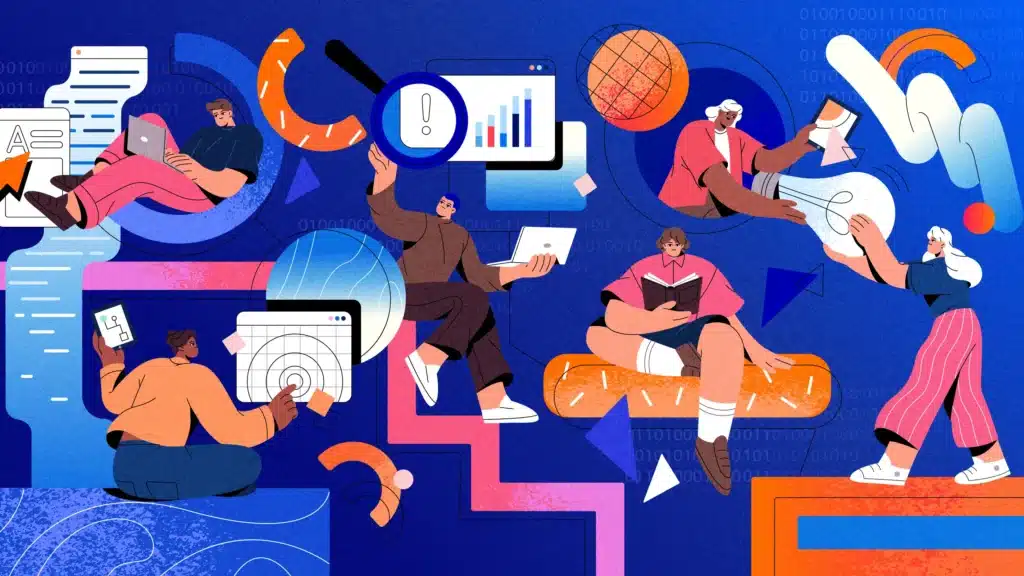Imagine, for a moment, that your company is experiencing an alarming dip in sales. In an attempt to pull the team out of its slump, you decide to put a few initiatives in place to fulfill your mission. You send out a series of emails flush with informative data. You gather everyone in the conference room to give a fiery speech on the importance of sales. You even open the floor up to other teammates who want to say their piece. Then, you declare next week Sales Appreciation Week.
Should you be surprised when the team doesn’t demolish its next round of sales objectives? Of course not! No quantity of speeches, data points, and discussions can fix broken business systems. Instead, effective organizational change requires gathering evidence and pinpointing metrics to establish baselines and measure progress. Savvy business leaders understand this. So why, then, haven’t they taken this approach with diversity, equity, and inclusion (DEI) efforts?
Why DEI efforts often fall short
DEI is commonly described in “squishy” terms, and that’s because it’s inherently emotional work. It’s uncomfortable to confront how prejudices and structural inequalities have produced unjust cultural norms in the workplace, and it’s exhausting for those who’ve long dealt with the effects of those norms to educate — and sometimes even comfort — the people who’ve just removed their blinders.
Instead, leaders focus on making employees “feel better.” These efforts often look a lot like the ones used in our opening hypothetical. Leaders talk at length about the importance of DEI, outline the business case for it, and pledge to hold themselves accountable. But when those discussions don’t translate to meaningful action, people start to tune them out. Once-passionate advocacy turns into passivity and cynicism. People fall back into old habits and business systems that perpetuate inequality.
It doesn’t help that the measuring stick for DEI efforts often relies on trailing indicators like demographics. Companies focus on adding certain numbers of people from underrepresented groups to their ranks without understanding and implementing the structures and metrics required to support their diversity goals. So they have no idea that those employees feel unwelcomed and stagnant in their careers until people start quitting in droves.
A more effective measure of DEI
I believe a more effective measure of DEI’s endless potential is worker productivity. When employees face bigotry or discrimination in the workplace, it understandably takes an emotional toll and translates into behavior changes.
For example, a 2020 report from SHRM found that when an employee is a target of racism, 45% respond by putting less effort into their tasks; another 35% take longer to complete those tasks. Almost 50% said they’ve called in sick or missed work due to the stress and anger of dealing with mistreatment. Even employees who aren’t the direct targets of racist behavior feel the effects: One in 10 Americans said they’ve taken time off after witnessing prejudice in the workplace.
The cost of not addressing this issue is both measurable and staggering. The same study found that the cost of lost productivity to U.S. businesses due to race-based mistreatment was $54.8 billion. However, by spending more time now to address issues both at the organizational and individual levels, companies will:
- Reduce the overall amount of time spent dealing with bias.
- Improve the employee experience and boost productivity.
You don’t have to take my word for it. Research consistently shows heightened productivity and larger profits follow increased diversity and inclusion. More specifically, higher levels of DEI are linked to quicker decision-making and more effective teamwork.
The all-important “how”
So how can companies actually implement this measurement of impact in order to make real DEI progress? To answer that question, we need to examine the two main areas of focus when dealing with issues like bias in the workplace:
- What issues can individual employees solve on their own?
- What issues are out of the employees’ control and therefore require leaders’ help to elevate and address?
It’s a 21st-century business imperative for leaders to analyze instances of potential bias or racism to determine what they’re dealing with. As a leader, you must evaluate each scenario to decide whether it is, in fact, discriminatory or just a matter of office politics or personality differences. If bias and racism are the culprits, you must demonstrate unwavering leadership to your people.
It’s not just about hiring diverse talent; it’s about creating an environment where workers have better experiences, thrive in their roles, and grow into leadership positions. This scenario is possible only when the quantifiable cost of employee productivity is the metric by which you measure the impact of DEI initiatives.




















